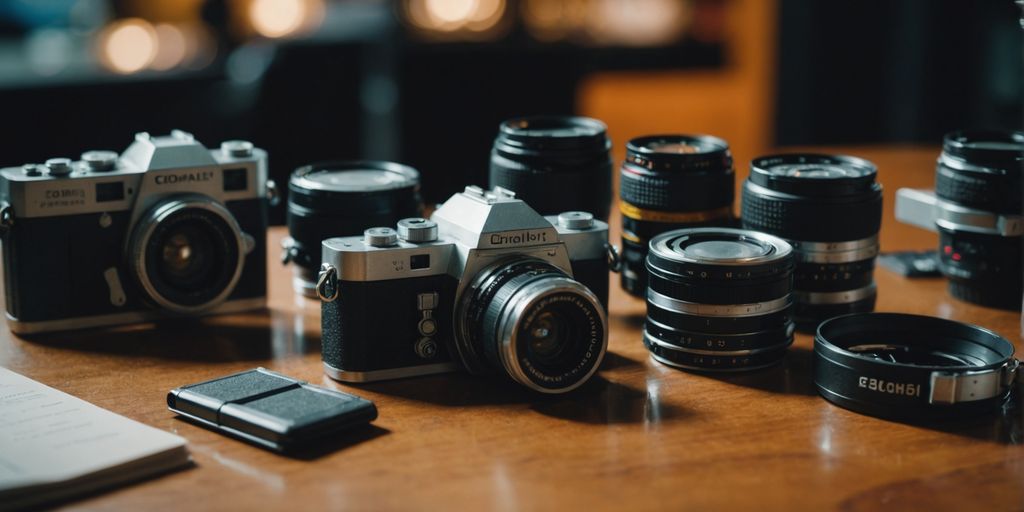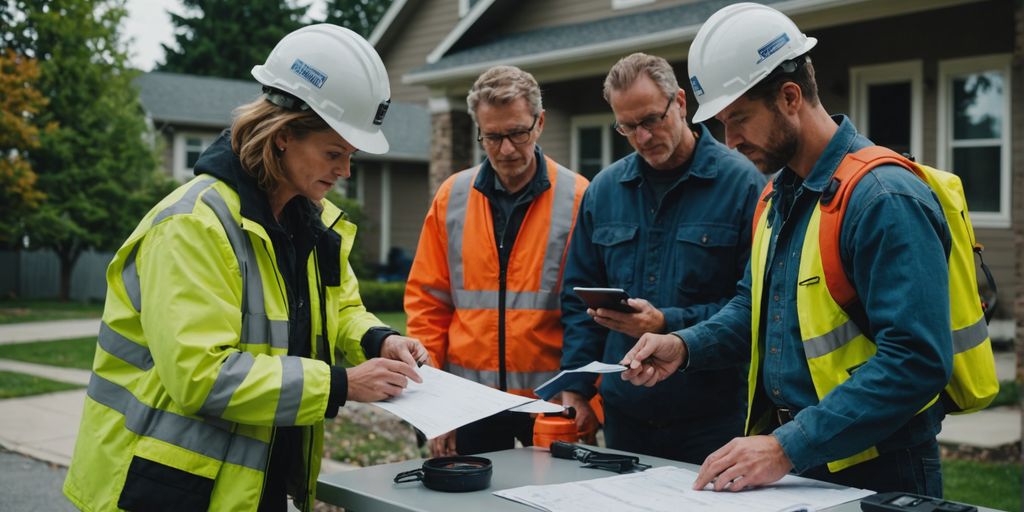In today’s world, knowing which products are safe to use is more important than ever. From cleaning supplies to baby products, understanding what makes an item safe can protect your health and the environment. This guide will help you identify safe items in various categories, ensuring peace of mind for you and your loved ones.
Key Takeaways
- Safe items are free from harmful chemicals and are environmentally friendly.
- Non-toxic ingredients are crucial for safe cleaning products.
- Baby and child-safe items should be non-toxic and free from small parts that could be swallowed.
- In the kitchen, use non-toxic cookware and safe food storage solutions.
- For personal care, choose products that are free from harsh chemicals.
Understanding Safe Items
Safe items are products that are designed to minimize risks to health and safety. Understanding what qualifies as safe is crucial for making informed choices in our daily lives. These items can range from household products to personal care items, and they play a significant role in protecting our well-being.
Definition of Safe Items
Safe items are those that do not pose a risk of harm when used as intended. This includes products that are free from toxic chemicals and harmful substances. For example, non-toxic cleaning supplies and safe toys for children are considered safe items.
Importance of Safe Items
Using safe items is essential for several reasons:
- Health Protection: Reduces the risk of exposure to harmful substances.
- Environmental Safety: Many safe items are eco-friendly, helping to protect our planet.
- Peace of Mind: Knowing that the products we use are safe can alleviate stress and worry.
Common Misconceptions
There are many misconceptions about safe items. Some people believe that all natural products are safe, but this is not always true. It’s important to read labels and understand what ingredients are used. Additionally, some may think that products labeled as "non-toxic" are always safe for all uses, which can lead to dangerous situations, especially with children and pets.
Understanding safe items is not just about avoiding harm; it’s about making choices that promote a healthier lifestyle and environment.
In summary, safe items are essential for maintaining health and safety in our homes and communities. By being informed and cautious, we can ensure that the products we choose contribute positively to our lives.
Identifying Safe Cleaning Products
Non-Toxic Ingredients
When choosing cleaning products, it’s crucial to read all labels on cleaning supplies and household products before you buy them. Look for items that contain plant-powered ingredients and avoid those with synthetic chemicals like phthalates, parabens, and artificial fragrances. Some safe alternatives include baking soda, vinegar, and hydrogen peroxide.
Eco-Friendly Labels
Eco-friendly labels can help you identify products that are safer for both your home and the environment. Look for certifications such as EWG VERIFIED® or Green Seal. These labels indicate that the product meets strict safety and environmental standards.
Avoiding Harmful Chemicals
Bleach is one of the most common household cleaning agents, but it can be harmful. Instead, opt for products that do not contain or have reduced amounts of VOCs, fragrances, and other harmful chemicals. Always review the ingredients list to ensure the product is safe for use in your home.
Choosing the right cleaning products can make a significant difference in maintaining a healthy and safe home environment.
Safe Items for Babies and Children
Ensuring the safety of babies and children is a top priority for any parent or caregiver. Choosing the right products can make a significant difference in creating a safe environment for little ones. This section will guide you through selecting safe toys, non-toxic baby products, and essential childproofing items.
Safe Kitchen Items
Food Storage Solutions
When it comes to storing food, safety is key. Opt for glass containers over plastic ones to avoid harmful chemicals. Glass is not only safer but also more durable and environmentally friendly. Make sure to use airtight lids to keep your food fresh and free from contaminants.
Non-Toxic Cookware
Choosing the right cookware is crucial for a safe kitchen. Materials like stainless steel, ceramic, glass, and cast-iron are excellent choices. These materials do not leach harmful substances into your food, making them a safer alternative to non-stick options that may contain risky chemicals.
Safe Cleaning Supplies for the Kitchen
Keeping your kitchen clean is essential, but it’s important to use safe cleaning products. Look for cleaners that are free from harsh chemicals. Some good options include:
- Countertop Cleaner
- Degreaser
- Dish Washer Cleaner
- General Purpose Cleaner
- Granite/Stone Cleaner
- Oven Cleaner
- Stove Top Cleaner
Always read the labels to ensure the products are non-toxic and safe for use around food.
By following these guidelines, you can create a safer kitchen environment for you and your family.
Safe Items for Personal Care
When it comes to personal care, choosing products that are safe and non-toxic is crucial for maintaining good health. Many personal care products contain harmful chemicals that can be absorbed through the skin, so it’s important to be mindful of what you’re using daily.
Safe Items for Pets
Pet-Safe Cleaning Products
Keeping your home clean is important, but it’s equally important to use cleaning products that are safe for your pets. Many common household cleaners contain chemicals that can be harmful to animals. Look for products labeled as pet-safe or non-toxic. These products are designed to keep your pets safe and cool this summer with these …
Non-Toxic Pet Toys
When choosing toys for your pets, it’s crucial to select items that are free from harmful chemicals. Opt for toys made from natural materials like rubber or latex. For example, Lanco sensory chew toys comply with safe safety standards as baby toys. These toys are not only fun but also safe for your pets to chew on.
Safe Pet Food and Treats
Feeding your pets high-quality food and treats is essential for their health. Look for brands that offer all-natural ingredients and avoid artificial additives. Redbarn pet products offer a wide assortment of safe, healthy, and all-natural dog chews. These options ensure your pets get the nutrition they need without any harmful substances.
Always have a ready supply of necessary items like collars, leashes, ID tags, food, carriers, and bowls for your pets. This ensures they are well-prepared for any situation, including emergencies.
By choosing safe items for your pets, you can help them live a healthier and happier life.
Safe Home Improvement Materials
Low-VOC Paints
When choosing paints for your home, opt for low-VOC (volatile organic compounds) options. These paints release fewer harmful chemicals into the air, making them safer for indoor use. Low-VOC paints are available in a variety of colors and finishes, ensuring you don’t have to sacrifice style for safety.
Non-Toxic Flooring Options
For non-toxic flooring, you are probably familiar with the OGs: natural wood, tile, or stone. When sustainably sourced, these fabulous options will serve your home well. Additionally, consider bamboo and cork, which are both renewable resources and provide a unique aesthetic.
Safe Insulation Materials
Insulation is crucial for maintaining a comfortable home environment. Look for insulation materials that are free from harmful chemicals. Options like cellulose, made from recycled paper, and natural wool are excellent choices. They not only insulate well but also contribute to a healthier indoor air quality.
Sustainable architecture uses natural or recycled materials to create more eco-efficient homes. This approach not only benefits the environment but also enhances the safety and well-being of the occupants.
By selecting safe home improvement materials, you can create a living space that is both beautiful and healthy for you and your family.
Safe Items for Outdoor Use
When it comes to enjoying the great outdoors, having the right items can make all the difference. Choosing safe items ensures not only your comfort but also your well-being and the protection of the environment.
Eco-Friendly Gardening Supplies
Gardening is a wonderful way to connect with nature, but it’s important to use products that are safe for both you and the environment. Look for organic fertilizers and pesticides that do not contain harmful chemicals. Composting is another great way to enrich your soil naturally.
Non-Toxic Pest Control
Keeping pests at bay is essential for a pleasant outdoor experience. Opt for non-toxic pest control methods such as diatomaceous earth or neem oil. These options are effective yet safe for humans, pets, and beneficial insects.
Safe Outdoor Furniture
Investing in weather-resistant outdoor cabinets and lockers can help you store your items safely. Choose furniture made from non-toxic materials and ensure it is sturdy to avoid accidents. Regular maintenance, like checking for rust or wear, can prolong the life of your outdoor furniture.
Safety first: preparing for outdoor adventures includes having the right gear and supplies. Always have a first aid kit, sturdy footwear, and a plan for emergencies.
By selecting safe items for your outdoor activities, you can enjoy nature while minimizing risks to your health and the environment.
Safe Items for Emergency Preparedness
Preparing for emergencies is crucial to ensure the safety and well-being of you and your family. Having a well-stocked survival kit can make a significant difference during unexpected situations. Here are some essential items and tips to help you get started.
Decoding Product Labels for Safety
When you pick up a product, the ingredient list can seem like a jumble of confusing terms. Learning to decipher these lists helps you make safer choices. Look for ingredients you recognize and understand. If an ingredient sounds too complex, it might be worth researching.
Safety certifications on product labels can give you peace of mind. Certifications like USDA Organic, Non-GMO Project Verified, and EWG Verified indicate that the product meets certain safety standards. These labels help you make informed choices at the market with ease.
Some terms on labels can be misleading. Words like "natural" or "eco-friendly" don’t always mean the product is safe. Be cautious of products with long lists of unrecognizable ingredients. Misinterpreting labels or trusting misleading terms can lead to serious health risks.
Ensuring peace of mind with life secure emergency solutions is crucial. Understanding product labels is a key step in emergency preparedness for safety and security at home.
Safe Items for Office and Workspaces
Creating a safe office environment is crucial for productivity and well-being. Ensuring safety, security, and emergency preparedness in the workplace involves several key elements.
Conclusion
In summary, understanding what items are safe is crucial for maintaining a healthy and secure environment, whether at home or elsewhere. This guide has provided a comprehensive look at various categories of safe items, from cleaning products to emergency supplies. By being informed and cautious, you can make better choices that protect your well-being and that of your loved ones. Always remember, safety starts with awareness and the right information.


